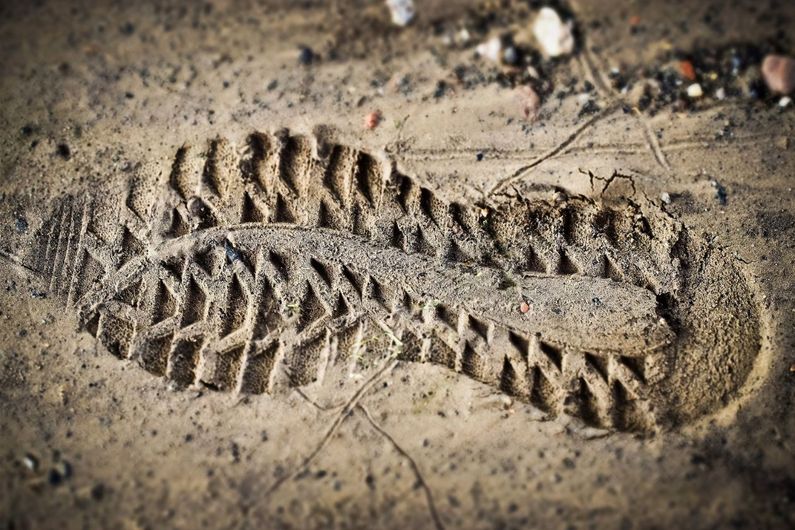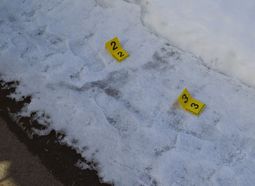When a crime's afoot, get ready to code
- UdeMNouvelles
02/12/2024
- Martin LaSalle
Criminology student Vincent Mousseau has found that forensic analysts do a good job of manually coding shoeprints for comparison against available databases.
On the morning of Dec. 21, 1999, William Fyfe went to a clothing drop-off at Trinity Church in Toronto and left three pairs of running shoes. An undercover Ontario Provincial Police officer was tailing him, and retrieved the shoes for forensic analysis.
What they revealed was important: on one of the shoes, the tread pattern matched a shoeprint taken from the room where, only a few months earlier in the Quebec town of Sainte-Agathe-des-Monts, a woman named Monique Gaudreau had been murdered.
The police arrested Fyfe the next day. And what eventually came to light was shocking: over the last two decades in Quebec, between 1979 and 1999, he had murdered at least nine women, making him the most notorious serial killer in the province's history.
The case illustrates the importance of physical evidence in solving crimes—in this example, shoeprints taken at the crime scene. For a shoeprint to be useful, its tread pattern must be meticulously coded and entered into a shoeprint database.
Typically, this coding is done manually by forensic analysts, but is this method reliable? Vincent Mousseau, a Ph.D. student at UdeM’s School of Criminology, decided to find out.
He enlisted the help of Quebec’s forensic science lab, the Laboratoire de sciences judiciaires et de médecine légale (LSJML). His findings were recently published in the Canadian Society of Forensic Science Journal.
A range of evidence
“Shoeprints are part of a range of circumstantial evidence that can move an investigation forward,” said Mousseau.
“They are rarely presented as evidence in court but they can help steer the investigation in the right direction by, for example, determining the number of people present at the time of the crime, ruling out suspects, or linking crimes that police initially thought were unrelated.”
As part of his research, Mousseau helped set up a project at the LSJML, where he had been working as a student for several years, to analyze the validity of the coding of the thousands of shoeprint images contained in its database.
“This database is similar to the fingerprint database is used by police across Quebec,” he explained. “After receiving an image of a shoeprint taken at a crime scene, the forensic analyst has to scrutinize and code the different patterns.”
It’s not an easy task. “The quality of the shoeprint is often suboptimal; for example, it could be a partial print or the tread could be obscured by mud or sand,” explained Mousseau. “So we need to make sure the people who query the database are reading the patterns in the same way.”
Mousseau and two forensic analysts from the LSJML’s forensic intelligence service extracted a set of about 30 shoeprints from the database and then coded them using an analytical grid. Each analyst coded each shoeprint twice, two weeks apart.
Mousseau then checked to see whether the analysts and the coding systems agreed.
Near-perfect consistency
“Apart from some minor variations, two of the three analysts showed near-perfect consistency in their coding between the two testing times, and there was a strong consensus among all three analysts,” reported Mousseau.
Although the level of agreement was lower for some patterns and shapes, the coding system developed by the three analysts generally showed a satisfactory degree of reliability.
But why measure the reliability of manual coding when the task could be performed by a computer?
“A computer can detect identical shoeprints but only under optimal conditions; in other words, when there is no background noise in the image,” said Mousseau.
“Computers are still deficient at analyzing 3D shoeprints, and they can’t make all the connections that a human can. So while there is growing interest in automated coding systems, these results suggest that manual coding of shoeprints is still an appropriate method for generating forensic intelligence.”
Following in the footsteps of Sherlock Holmes
Attracted to criminal investigation since childhood, Vincent Mousseau earned a bachelor’s degree in chemistry, specializing in forensic science, from Université du Québec à Trois-Rivières. As an undergraduate, he became interested in crime scene shoeprints—so interested that today he can identify almost any brand of shoe, however rare, from its print.
Why the fascination with shoeprints?
“I was struck by an observation Sherlock Holmes made in The Adventure of Black Peter, a story Sir Arthur Conan Doyle published in 1904,” Mousseau recalled.
“Holmes said, ‘I have investigated many crimes, but I have never yet seen one which was committed by a flying creature. As long as the criminal remains upon two legs so long must there be some indentation, some abrasion, some trifling displacement which can be detected by the scientific searcher.’”















